Dyson Airstrait vs. ghd Duet Style: Which wet-to-dry hair straightener is best?
Content is created by CNN Underscored’s team of editors who work independently from the CNN newsroom. When you buy through links on our site, CNN and its syndication partners may earn a commission. Learn more
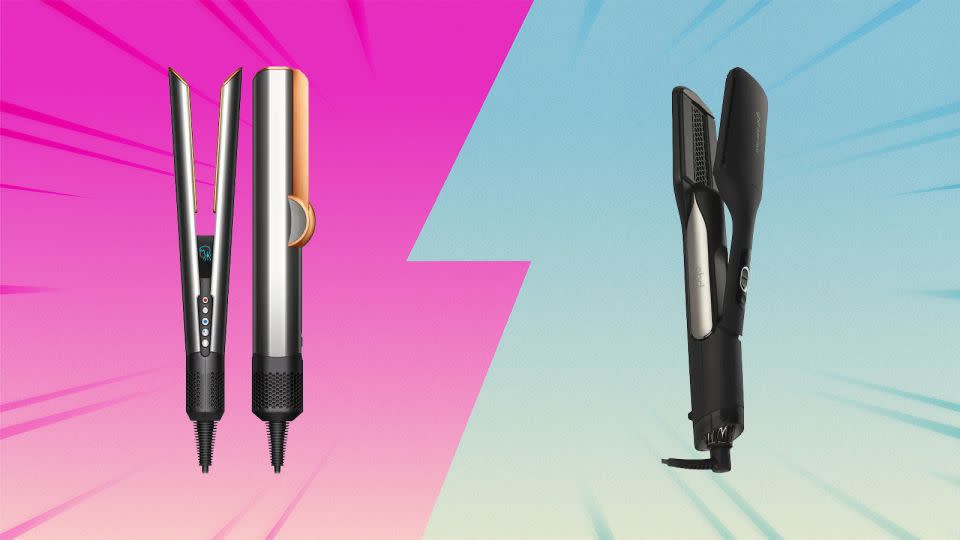
This article is part of our series Battle of the Brands, in which we compare category-leading products to their counterparts to determine which are actually worth your money.
From blow dryer brushes to multi-stylers, hair tools are adapting to our fast-paced lives, morphing into hybrid devices that can style our hair with less time and effort. Last year was a biggie, introducing not one but two wet-to-dry hair straighteners, the ghd Duet Style and the Dyson Airstrait. Both promise to dry and straighten hair simultaneously, leaving you with smooth hair and less heat damage. But which double-duty hair straightener is right for you?
I had previously tested the Airstrait for our initial review of the device last year — and, to be honest, was left with more to be desired. (I recommend reading the review to get the full picture, since we tested it on multiple hair types.) Giving it a second chance, I put it head-to-head with the Duet Style over the past month and tested out their drying power and smoothing ability on my medium-thick, long hair. With both currently on sale, what better time to find out which is best?
Before we get into the nitty-gritty, I’ll add a disclaimer that I have naturally straight hair. Even so, I used to straighten it with a traditional flat iron to get that shiny, glossy salon finish. Nowadays, it lays flat and a bit lackluster unless I heat style it. So while I know we won’t see the most transformative results on my already straight strands, I’m still a decent judge of their efficacy. (Not to mention, I test beauty products for a living, have tried nearly all the Dyson hair tools and have a jumble of hair dryers, flat irons and curling wands in my collection.)
Now that’s out in the open, let’s get into the review.
Dyson Airstrait vs. ghd Duet Style at a glance
Dyson Airstrait
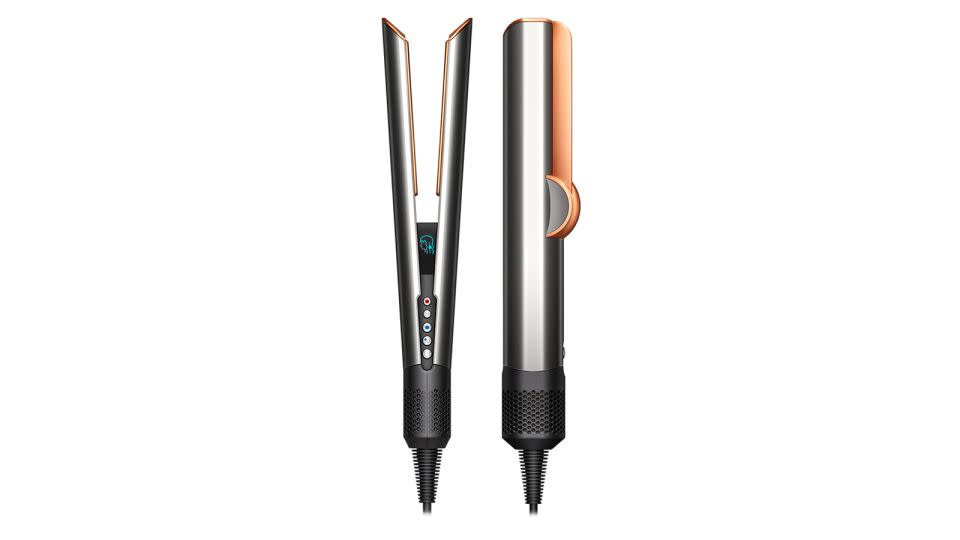
Dyson's wet to dry styler achieves smooth, straight hair with relatively little heat (compared to traditional hair straighteners) and even less effort. Customizable settings and intuitive design make it a beginner-friendly hair tool.
$400 at Dyson
$399 at Amazon
$399 at Sephora
ghd Duet Style 2-in-1 Hot Air Styler

Ghd's styler combines hot plates and air flow to simultaneously dry and straighten the hair, saving time in your hair care routine. It tops out at 365-degrees Fahrenheit to protect hair from extreme heat damage.
Quick comparison
Less heat, faster styling
While traditional flat irons can surpass temperatures of 400-degrees, the Airstrait and Duet Style never get that hot. That’s because they use super-charged air flow to dry the hair as you style it. And both use sensors to work smarter not harder. The Airstrait is equipped with intelligent heat control that regulates airflow temperature up to 30 times per second, according to Dyson. Meanwhile, ghd says the Duet Style features “infinity sensors” that help maintain optimal styling temperatures for your hair’s needs.
The fan on Dyson’s tool is located on the outer edge of the straightener, so it directs airflow downwards, or away from your head. It also has gentle diffusers that make it more comfortable to use close to the scalp. The airflow defaults to low when the arms are open, but if you close them, it kicks into high speed. When the arms are closed, you can also slide a button to lock them in place and use the device like a hair dryer to rough-dry your hair.
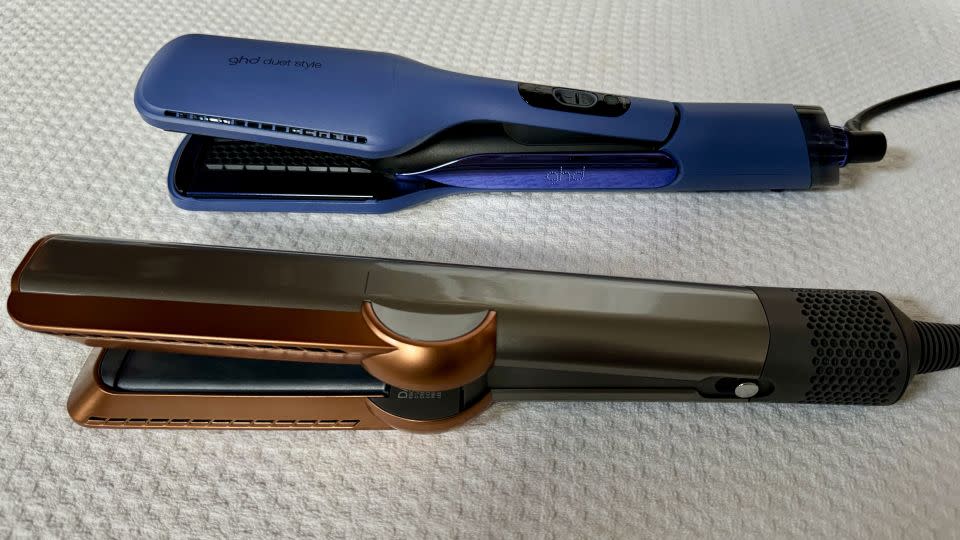
When I first tested both, I used the Airstrait on the right side of my head and the Duet Style on the left after towel-drying my hair. With the Airstrait side, I pre-dried the roots with the device’s hair dryer mode and then started working in sections, running my strands through the straightener. It took a good three to five passes on each section of hair to get it sufficiently dry.
After that, styling my whole head with the Airstrait, I found that it was best to pre-dry the whole lengths 50-70%, focusing on the roots, with my hair dryer to save time. Then, when I followed with the Airstrait, it only took two or three passes. While the Airstrait’s airflow is powerful, it’s not equivalent to a hair dryer, especially Dyson’s own high-tech Supersonic.
I ultimately used the same method with the Duet Style. Testing it on the left side of my head and starting with towel-dried hair, it took about three to five passes on each section to get it dry. After rough-drying it to 50% first, it only took two to three passes.
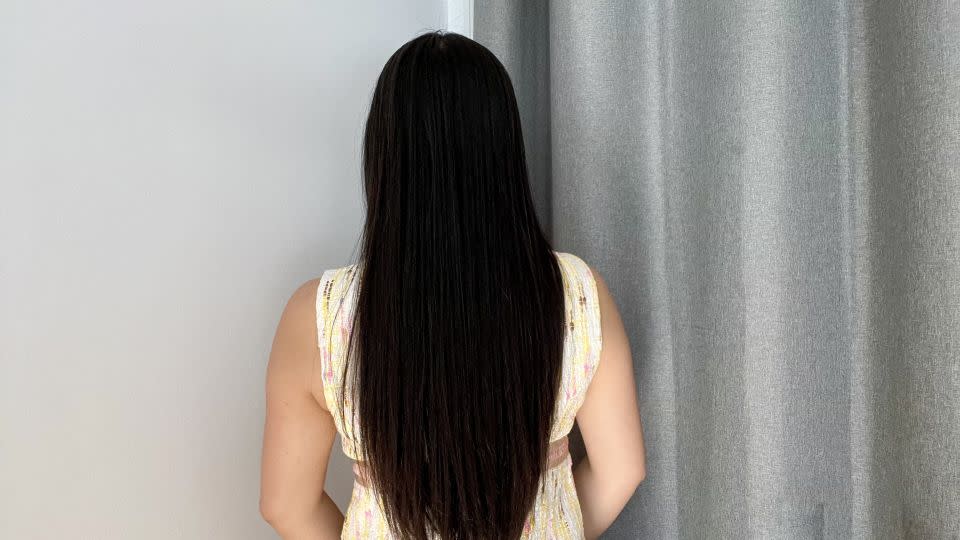
Unlike the Airstrait, the Duet Style’s airflow is concentrated in the middle of the arms, so your hair is getting all that powerful air in between them as you clamp down and pass your hair through. I’ll also point out that because of the airflow placement, there is no dryer mode and any pre-drying has to be done with a hair dryer. The wider arms also might be cumbersome to maneuver with shorter hair.
Where you save time with these tools is in the straightening process. Instead of having to completely dry your hair and then pick up a hair straightener, you can cut some time off the drying time and get to styling faster. While I can see this really saving time for finer hair types with more wave/curls, the results weren’t as wow-worthy for my thicker, naturally straight hair. After getting the hang of the tools, I liked being able to recreate a subtle blowout effect with both, curving my ends in with the straighteners.
One has heat plates, the other has tension bars
In look and feel, Dyson and ghd’s straighteners resemble a traditional flat iron but with the added bulk of the motors for airflow. On the inside of the arms, both have smooth panels that you pass the hair through. On the Duet Style, these are heat plates. When you turn the tool on, they rapidly heat up and the fan starts to ramp up as the device prepares for use (it beeps when it’s ready). It’s ready in seconds.
The Airstrait doesn’t have heat plates, instead it’s equipped with tension arms. The main function of these is to provide control as you pass the tool along the length of the hair. While they conduct heat, it’s actually the airflow that does most of the work here.
Because of this key difference, I found that the Duet Style added sleekness to my hair that the Airstrait did not. Both devices can be used on dry hair to get your look to last, but the Duet Style definitely has a leg up on the Airstrait for dry styling. For dry hair only, the Duet Style has an additonal Shine Shot setting which brings the temperature of the heat plates up to 365 degrees — the temp that ghd says is optimal for heat styling.
Dyson also has a Boost mode for dry styling, which amps the heat up, but its dry hair settings are mainly for touch-ups. Even after using the Boost mode to complete my styling, my hair didn’t have that glossy finish you get with a traditional flat iron.
The trade-off here is that the Duet Style uses higher heat, and therefore runs the risk of causing damage. When I used the Duet Style’s Shine Shot to finish my look, I could smell my hair starting to fry. (Don’t worry, I used Ouai’s Anti-Frizz Cream as a heat protectant on my towel-dried hair, and then R+Co’s Chainmail Thermal Protection Spray before dry styling). But my hair looked shiny and pin straight when I was done.
Dyson has customizable settings
The Duet Style’s straightforward buttons — there’s an On/Off switch and the Shine Shot button — may be appealing to some, but perhaps limiting to others. For those that want more control with their device, Dyson outshines ghd.
The Airstrait has a sleek LCD screen that indicates what styling mode (Wet or Dry) you’re in, as well as the temperature and airflow settings. The straightener has five buttons to toggle through these settings (Temperature Control, Airflow Control, Cool Mode, Wet/Dry Mode select and the Power button). There’s also a switch on the opposite side of the device to lock the arms together.
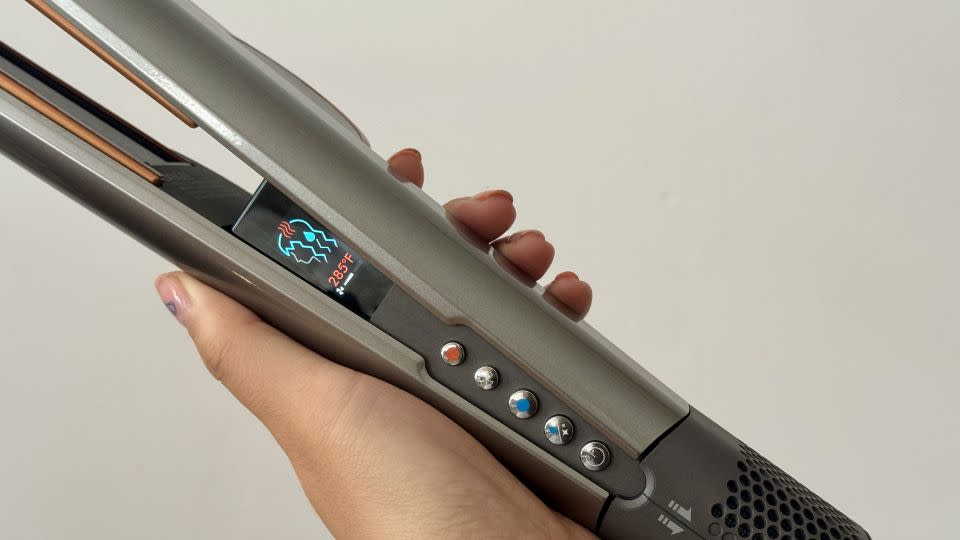
Along with its multiple temperatures and airflow speeds, the Airstrait also has Idle Mode (Airflow is reduced when the straightener’s arms are open, and then will increase when you close them) and Auto Pause (the device saves energy and pauses after three seconds if left stationary with the arms open; it wakes up when you move it). The cherry on top is that you can toggle Idle Mode and Auto Pause on and off in the Airstrait’s settings to streamline your styling process. You can also change the device’s language and temperature units too.
Bottom line
This one was difficult for me to pick a winner and ultimately it depends on your hair goals. If you’re loaded up with heat protectants and just want smoother hair faster, go with the Duet Style. If you’re trying to take it easy on the heat styling, I would opt for Dyson. If extras are the last piece of the puzzle for you, all Airstrait colors come with a heat mat and select colors of the Duet Style come with a carry case that doubles as a heat mat.
Overall, you’ll get better value with ghd. The Duet Style is easy to use and effective. It still avoids the 400-plus-degree temps that traditional flat irons reach, but gets pretty close. The payoff is straight, shiny hair that you’ll want to run your fingers through all day long.
The Airstrait has lower temps than the Duet Style, and it offers plenty of control with its heat and airflow settings. It might not deliver on the sleekest, smoothest finish for thick or curly hair (again, check out our full review of it), but it will save you time and keep your hair healthier.
Note: The prices above reflect the retailers' listed price at the time of publication.
For more CNN news and newsletters create an account at CNN.com

